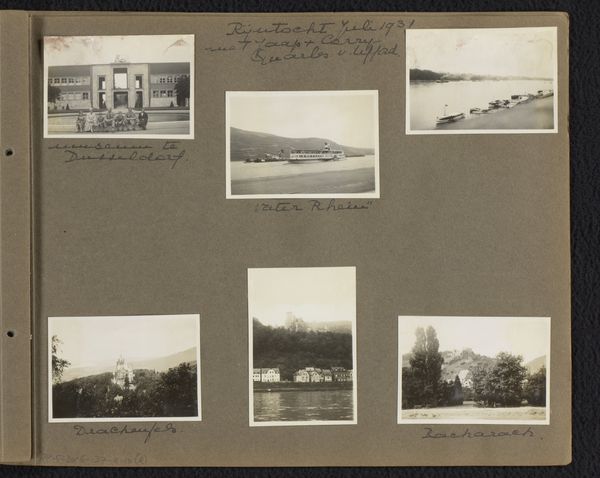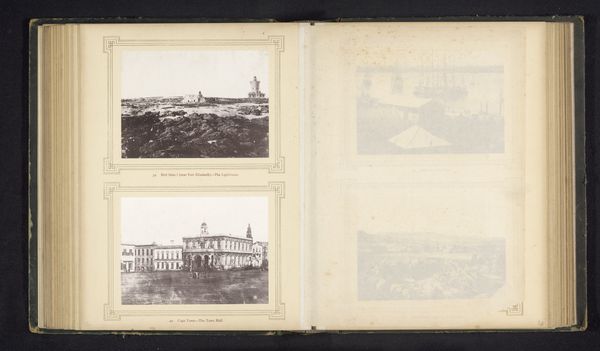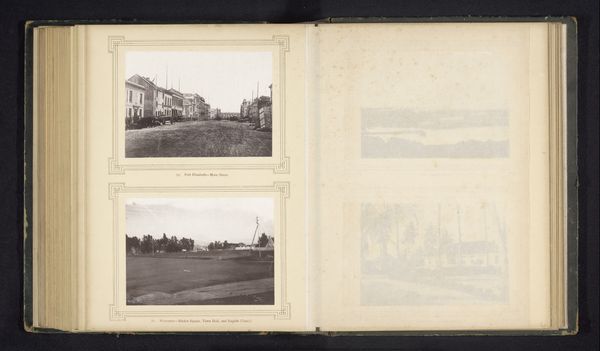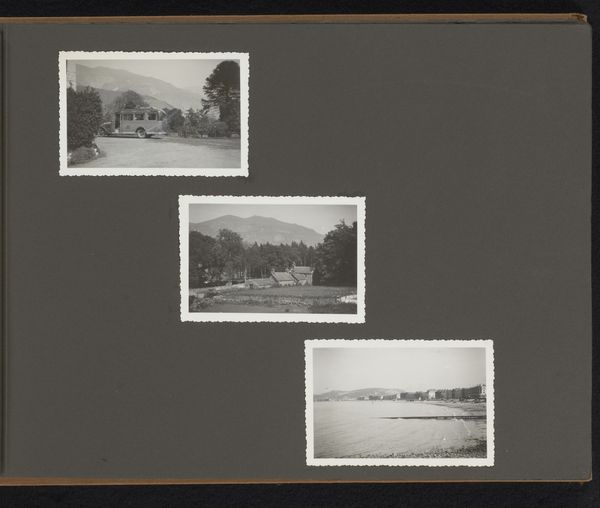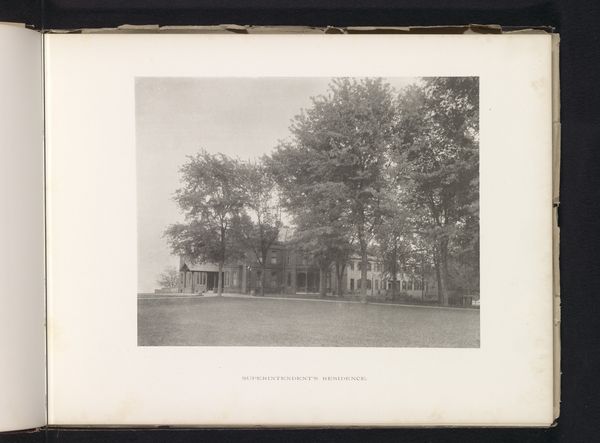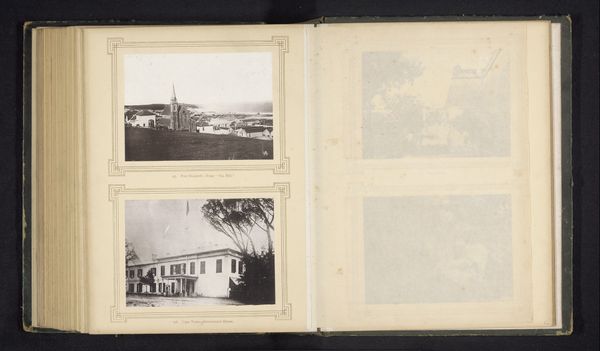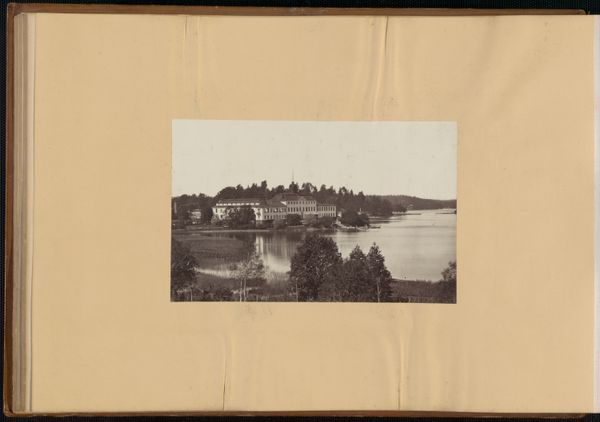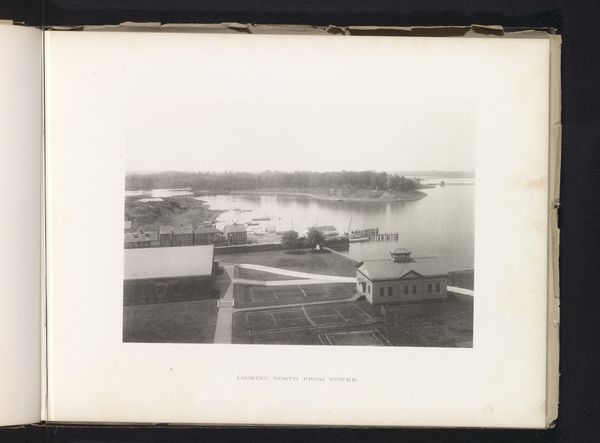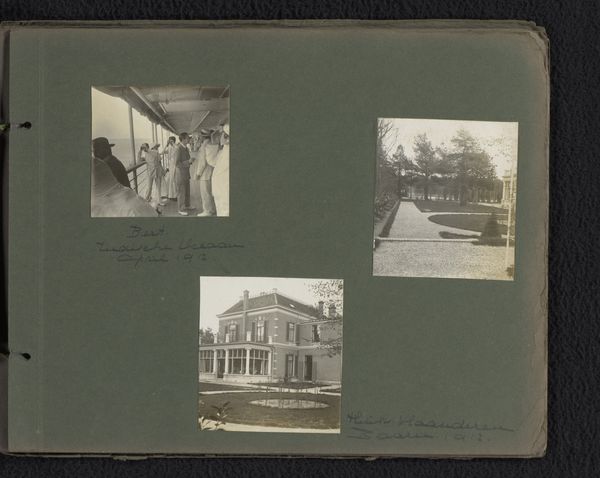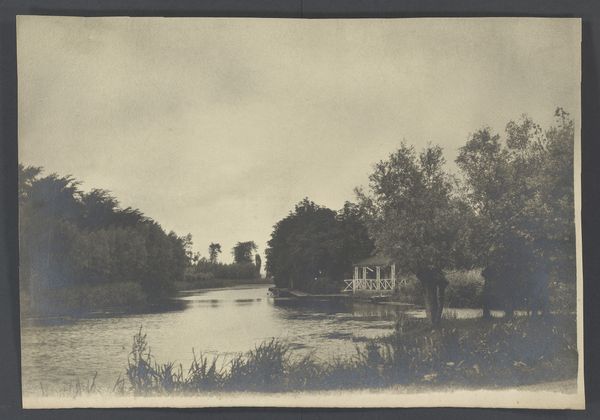![['Gymnasium', 'Gas-house'] by Edward H. Hart](/_next/image?url=https%3A%2F%2Fd2w8kbdekdi1gv.cloudfront.net%2FeyJidWNrZXQiOiAiYXJ0ZXJhLWltYWdlcy1idWNrZXQiLCAia2V5IjogImFydHdvcmtzL2E1OTFjZjQzLWY4OGItNDg5MC1hNDNhLTVmM2ZhYTBlNDFiYi9hNTkxY2Y0My1mODhiLTQ4OTAtYTQzYS01ZjNmYWEwZTQxYmJfZnVsbC5qcGciLCAiZWRpdHMiOiB7InJlc2l6ZSI6IHsid2lkdGgiOiAxOTIwLCAiaGVpZ2h0IjogMTkyMCwgImZpdCI6ICJpbnNpZGUifX19&w=3840&q=75)
photography, albumen-print, architecture
#
landscape
#
photography
#
cityscape
#
albumen-print
#
architecture
#
realism
#
building
Dimensions: height 199 mm, width 293 mm
Copyright: Rijks Museum: Open Domain
Curator: Here we have a page from an album featuring albumen prints titled "Gymnasium, Gas-house" attributed to Edward H. Hart from before 1890. My first impression is one of strong verticals, particularly those insistent masts echoed in the single, confident chimney, which commands attention and dictates the visual hierarchy of the image. Editor: The presence of these photographs of two different buildings invites an exploration into how industrial structures were integrated, both functionally and visually, into the fabric of nineteenth-century society. The Gymnasium, which served as a place of gathering and exercise, seems juxtaposed with the more pragmatic Gas-house, which harnessed a source of power. The combination implies a worldview centered on balance between mind, body, and access to essential resources. Curator: You're right; the layout creates a conversation between seemingly disparate subjects. The formal organization strikes me, too. Note the careful balance between man-made structures and the natural landscape. Observe how the composition leads the eye, initiating with the clear geometries of the gym on the left, then to the organic forms of the tree and ship's masts that fade into the sky in the top center, ending on the solidity of the gas-house—grounded by the long horizontal shadow of a cannon facing right. There's a clear, rational progression. Editor: The cannon, a phallic symbol of dominance and technological progress, could signify military strength in the period before the modern industrial era. But what is its relationship to the Gas-house in terms of the values of labor and manufacture of fuel to fire technological transformation? Hart has made no mere documentary photograph of industry and civil exercise. His decision-making process encodes his values as an active agent in the scene. Curator: An astute observation; it invites consideration of the social narratives embedded in seemingly ordinary architectural elements. I wonder whether the placement of these images offers commentary on power structures prevalent at the time. Editor: Well, this photograph now invites speculation on the power and balance within civil structures. Thank you for sharing this glimpse into a layered conversation.
Comments
No comments
Be the first to comment and join the conversation on the ultimate creative platform.

